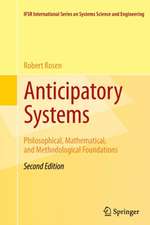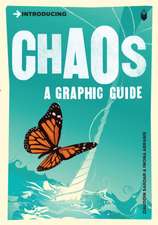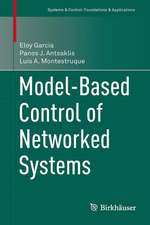Control, Information, and Technological Change: NATO Asi Series. Series C, Mathematical and Physical Science, cartea 6
Autor Gerald E. Flueckigeren Limba Engleză Hardback – 31 aug 1995
| Toate formatele și edițiile | Preț | Express |
|---|---|---|
| Paperback (1) | 634.68 lei 6-8 săpt. | |
| SPRINGER NETHERLANDS – 20 oct 2012 | 634.68 lei 6-8 săpt. | |
| Hardback (1) | 697.32 lei 6-8 săpt. | |
| Kluwer Academic Publishers – 31 aug 1995 | 697.32 lei 6-8 săpt. |
Din seria NATO Asi Series. Series C, Mathematical and Physical Science
- 15%
 Preț: 591.29 lei
Preț: 591.29 lei - 5%
 Preț: 779.53 lei
Preț: 779.53 lei - 15%
 Preț: 582.91 lei
Preț: 582.91 lei - 15%
 Preț: 584.71 lei
Preț: 584.71 lei - 15%
 Preț: 580.46 lei
Preț: 580.46 lei - 15%
 Preț: 586.37 lei
Preț: 586.37 lei - 15%
 Preț: 586.02 lei
Preț: 586.02 lei - 15%
 Preț: 588.00 lei
Preț: 588.00 lei - 15%
 Preț: 702.54 lei
Preț: 702.54 lei - 15%
 Preț: 596.65 lei
Preț: 596.65 lei - 15%
 Preț: 588.97 lei
Preț: 588.97 lei - 15%
 Preț: 592.71 lei
Preț: 592.71 lei - 15%
 Preț: 584.71 lei
Preț: 584.71 lei - 15%
 Preț: 592.71 lei
Preț: 592.71 lei - 15%
 Preț: 578.84 lei
Preț: 578.84 lei - 15%
 Preț: 600.80 lei
Preț: 600.80 lei - 15%
 Preț: 583.75 lei
Preț: 583.75 lei - 15%
 Preț: 599.61 lei
Preț: 599.61 lei - 15%
 Preț: 597.30 lei
Preț: 597.30 lei - 15%
 Preț: 595.69 lei
Preț: 595.69 lei - 15%
 Preț: 599.14 lei
Preț: 599.14 lei - 15%
 Preț: 587.35 lei
Preț: 587.35 lei - 15%
 Preț: 590.96 lei
Preț: 590.96 lei - 15%
 Preț: 605.49 lei
Preț: 605.49 lei - 15%
 Preț: 592.90 lei
Preț: 592.90 lei - 5%
 Preț: 653.87 lei
Preț: 653.87 lei - 15%
 Preț: 594.85 lei
Preț: 594.85 lei - 15%
 Preț: 595.86 lei
Preț: 595.86 lei - 15%
 Preț: 600.58 lei
Preț: 600.58 lei - 15%
 Preț: 708.61 lei
Preț: 708.61 lei - 15%
 Preț: 590.77 lei
Preț: 590.77 lei - 15%
 Preț: 595.36 lei
Preț: 595.36 lei
Preț: 697.32 lei
Preț vechi: 820.38 lei
-15% Nou
Puncte Express: 1046
Preț estimativ în valută:
133.44€ • 142.69$ • 111.25£
133.44€ • 142.69$ • 111.25£
Carte tipărită la comandă
Livrare economică 18 aprilie-02 mai
Preluare comenzi: 021 569.72.76
Specificații
ISBN-13: 9780792336679
ISBN-10: 0792336674
Pagini: 176
Dimensiuni: 160 x 240 mm
Greutate: 0.43 kg
Editura: Kluwer Academic Publishers
Seria NATO Asi Series. Series C, Mathematical and Physical Science
Locul publicării:Dordrecht, Netherlands
ISBN-10: 0792336674
Pagini: 176
Dimensiuni: 160 x 240 mm
Greutate: 0.43 kg
Editura: Kluwer Academic Publishers
Seria NATO Asi Series. Series C, Mathematical and Physical Science
Locul publicării:Dordrecht, Netherlands
Public țintă
ResearchCuprins
List of Symbols. List of Figures. List of Tables. Preface. 1. Control. 2. Behavior: Perception and Execution. 3. Learning to Make Distinctions. 4. The Law of Requisite Variety. 5. Behavior: Routines and Bounded Rationality. 6. Information Theory and Coding. 7. The Unit of Analysis Problem: Two Conjectures. 8. Concluding Remarks. Endnotes. References. Index.














